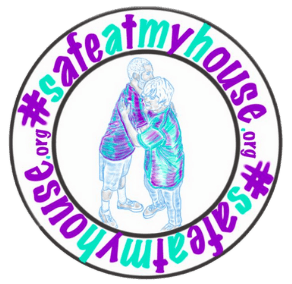Keeping Your Child Safe in School School safety is a top priority for parents, teachers, and administrators alike. But what are some concrete ways to keep students safe? In this blog post, we’ll explore some of the ways schools can create a safe environment for students. We’ll cover topics like teacher training, developing policies to prevent violence, and responding to threats of violence. We’ll also touch on the importance of communicating with parents about safety. By the end of this post, you should have a better understanding of how schools can keep students safe. Creating a Safe School Environment School administrators are responsible for the safety of students while they are in school. To create a safe school environment, administrators need to work with parents and teachers to develop a clear discipline policy and train staff on how to handle incidents. There are many ways to create a safe school environment, including working with law enforcement, having a clear discipline policy, and training staff on how to handle difficult situations. By putting these measures in place, schools can ensure their students are safe while they are attending classes. Teacher Training on Safety As parents, it is our responsibility to ensure that our children are safe when they are in school. This means that we need to be able to talk to them about safety in a way that is both effective and age-appropriate. One of the most important ways to keep your child safe in school is to have open communication with them. This means that you need to be able to talk about safety issues in a way that is both effective and age-appropriate. For example, if you are worried about your child walking to school alone, you should discuss this with them calmly and rationally. You don't need to scare them or make them feel like they are doing something wrong. Another important aspect of safety in schools is having a well-trained staff. Teachers are trained on how to deal with different situations, such as when children become unruly. In addition, administrators are often on hand to help provide support for teachers when necessary. By being aware of these things, you can ensure that your child has a safe experience at school every day. Developing Policies to Prevent Violence There are many different factors that contribute to violence in schools, and it is difficult to prevent it completely. However, there are a number of things that parents and educators can do to help reduce the incidence of violence. One important factor is for parents to be more involved in their child's schooling. This can help to provide better education and support for children, which can ultimately lead to less violence in school. Teachers also need training in handling behavior problems in students. Many times, teachers have little or no experience dealing with these types of situations. As such, they may not know how best to handle them. In addition, schools need to develop policies that will prevent violence from happening in the first place. This can include things like setting clear rules and regulations about acceptable behavior, as well as providing resources (such as security guards) when needed. Ultimately, it will require a collective effort from parents, educators, and government officials to prevent violence from happening in schools. However, by taking the appropriate steps early on, we can make a major impact on preventing this type of tragedy from taking place in the future. Teaching Students About Personal Safety One of the biggest concerns parents have when it comes to their kids is their safety. One way to help ensure your children are safe is to talk to them about personal safety. There are a number of ways you can do this, and schools are starting to take notice. For example, some schools now offer personal safety patrols during lunchtime or after school. Additionally, many schools have online resources that parents can access, such as SafeKids Worldwide. These resources provide information on topics such as stranger danger and cyberbullying. Parents can also help keep their kids safe by being aware of what's going on in school and talking to their kids about it. This can include things like knowing the signs of bullying or telling your child how they can report any incidents that occur at school. In addition, parents should be prepared with emergency contact information for their kids in case something happens while they're not around (such as if a student has a fever). Finally, parents should be sure to equip their children with the tools they need to stay safe – such as avoiding secluded areas or walking in pairs when possible. Responding to Threats of Violence When it comes to violence in schools, we all want our children to be safe. However, sometimes the threats are too much for us to handle on our own. In this section, we will discuss some steps that you can take to open the conversation with your child about violence in school. We will also provide tips on what to do if you hear a rumor about a threat of violence at school. Finally, we will outline what you should do if your child comes home and says they were threatened at school. Talking about violence in schools is always an important step forward. By taking these simple steps, you can help ensure that your child is as safe as possible while attending school. If you are hearing rumors about a threat of violence in your child's school, it is important to take action. The best way to do this is by talking to your child about the situation. Try to find out what happened and why the person threatened your child. You can also talk to the teacher or guidance counselor about what should be done if there are any further threats. If you ever see any physical violence at school, it is important to immediately go to a trusted adult. This could include calling 9-1-1, going to the school office, or calling a trusted friend or family member. Handling Violent Incidents When a violent incident occurs, it can be difficult for parents, teachers, and other members of the community to handle the situation. In order to help individuals deal with these incidents in a constructive way, it is important that they are informed about what to do. Parents can help by staying up-to-date on the latest news and information about violent incidents. Teachers can create a safe and supportive environment for their students. It is also important that school administrators establish policies and procedures so that all students know how to respond in an emergency situation. When a violent incident occurs, it is important for individuals to know their rights and how to exercise them. Individuals have the right to remain silent if they are questioned about what happened. They also have the right to speak with an attorney if they want one. If authorities believe that the individual was involved in or caused the violence, they may arrest them. Individuals should always carry identification with them in order to prove their innocence if necessary. Communicating With Parents About Safety It can be difficult for parents to know what to do if their child is being bullied at school. In order to help them communicate with their children about safety, it is important to involve them as much as possible. Here are some tips on how to do this: - First and foremost, always let your child know that they can come talk to you anytime about anything that is going on at school. This will give them assurance that you are there for them, and it will also help build a trust relationship between you and your child. - Next, provide information about the bullying situation. For example, tell your child what type of bullying is happening (e.g., physical violence, verbal abuse), and why your child may be targeted. This information will help your child understand the situation better, and it will allow them to take steps in defense (such as reporting the incident). - Finally, make sure you communicate with parents when there are changes or updates related to the bullying situation. For example, if a new student has been added to the school district or a new bully has been identified. By informing parents ahead of time, you can ensure that they have enough information to support their children during these tough times. Working With Law Enforcement on School Safety It is important to keep your child safe in school. There are a variety of ways that you can do this, and working with law enforcement is one way to ensure the safety of your child. When it comes to working with law enforcement on school safety, there are a few things that you need to know. First, make sure that you have an up-to-date list of contacts for law enforcement in your area. Second, be aware of the laws and regulations related to school security and emergencies. Finally, always follow the advice of law enforcement when it comes to dealing with an emergency situation at school. If your child is being bullied at school, there are a few things that you can do. First, speak to your child about what he or she needs to do if they experience bullying behavior in class. Next, talk to other parents who may be able to help support your child during this difficult time. Finally, contact local officials (such as the police) if necessary in order to protect your child’s safety. Working with law enforcement is an important way to ensure the safety of your child in school. Here are a few things that you need to know in order to successfully work with law enforcement: First, have an up-to-date list of contacts for law enforcement in your area. This includes the name, contact information, and phone number for the local police department as well as any district or county agencies that may be involved in protecting students (such as Child Protective Services). It is also important to keep track of changes to these contacts so that you are always aware of who to reach out to when there is an emergency at school. Second, be aware of the laws and regulations related to school security and emergencies. Make sure that you understand what qualifies as an emergency situation under state or federal law, and follow the advice of law enforcement officials when responding to such a situation. For example, if a student has been caught with a weapon on school property, it would be illegal for teachers or administrators not to notify the police immediately. In most cases, however, contacting authorities will only increase the safety of both children and staff members on scene. Finally, always follow the advice of law enforcement when it comes to dealing with an emergency situation at school. For example, do not try to apprehend any suspects yourself – let officers from the police department handle this task. And remember even if something does not appear violent or criminal at first glance, it could still be considered an emergency under U.S. law. Final Thoughts These are just a few ways to keep your child safe in school. As a parent, it is important to be involved in your child's schooling and to have open communication with them about safety. Additionally, schools play a role in keeping students safe by having clear policies and procedures in place. Lastly, it is important for everyone to be prepared with emergency contact information. By taking these steps, we can help ensure that our children are safe while they are attending school.

